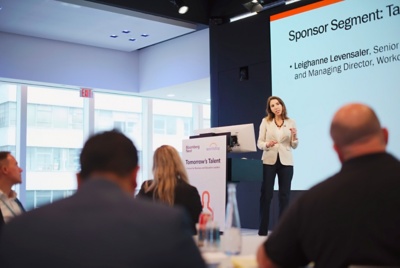Taking the Next Steps for Tomorrow’s Talent
Business and education leaders came together at the Bloomberg Next Tomorrow's Talent Forum to discuss a number of timely challenges, ranging from how we can better prepare graduates for the workplace to how artificial intelligence impacts existing job roles. Workday's Leighanne Levensaler shares some ideas for next steps, including working more closely with local educational institutions, seeking diverse sources of talent, better sourcing from within the organization, and reskilling the workforce to adapt to innovation.






